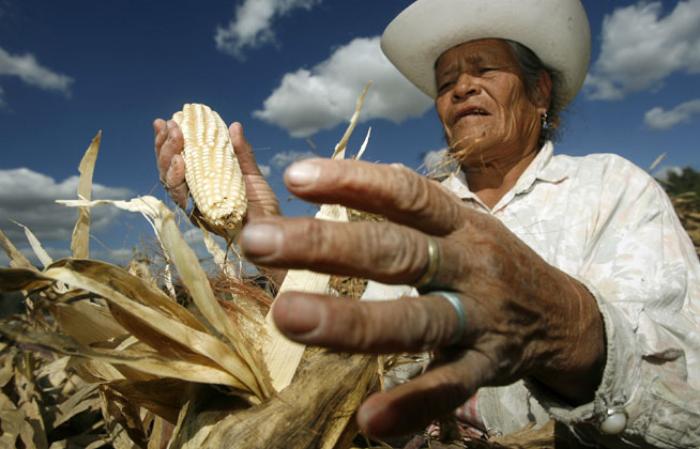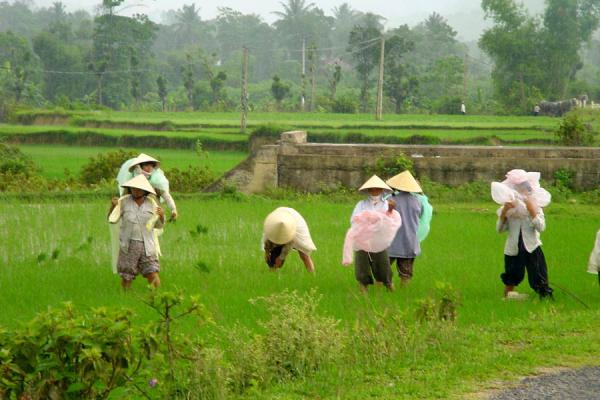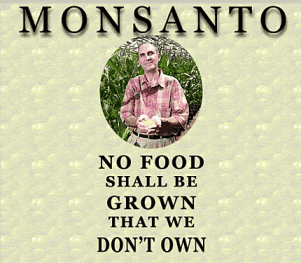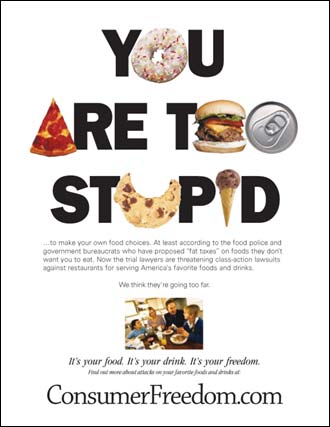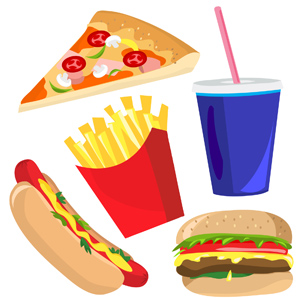http://ciw-online.org/ - CIW
Both of these groups are international leaders in the fight for farmers rights and justice. The CIW and La Via Campesina are battling similar enemies but fighting on different battlefronts.
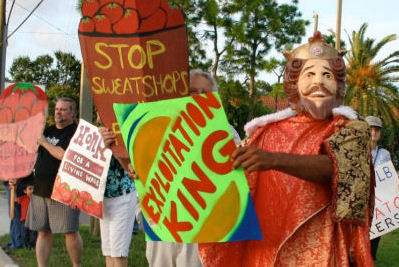
The CIW fights for justice on Florida's tomato farms. They have targeted large fast food chains including Burger King, McDonalds, and Taco Bell asking for a one cent raise per pound of tomatos picked. Immokalee farmers are only paid between 40 and 45 cents per 32 pound bucket of tomatos.
 The exploitation of immigrants in Florida, both legal and illegal, has been going on for over 30 years. Workers have no employment rights to organize or receive benefits outside their wages. Seven cases of modern day slavery have been brought to light by the CIW.
The exploitation of immigrants in Florida, both legal and illegal, has been going on for over 30 years. Workers have no employment rights to organize or receive benefits outside their wages. Seven cases of modern day slavery have been brought to light by the CIW.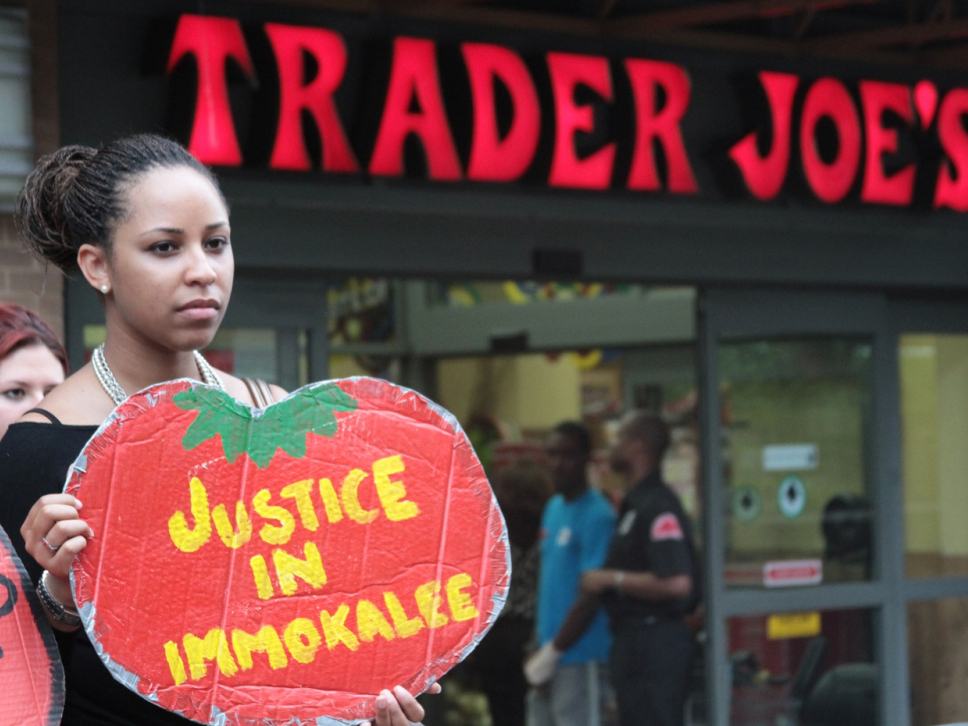 Living conditions on Florida tomato farms are very poor. Residents and tomato pickers are often stuck in a cycle of poverty because of their low wages and because the majority of these wages are spent just so a worker can have a place to sleep or food to eat. Farmers who work at Immokalee are dependent on their jobs and the people who control their living conditions. Surpluss populations have made workers disposeable and gives no incentive for those who are in control to change their power structure or to change any of the poor conditions workers are facing.
Living conditions on Florida tomato farms are very poor. Residents and tomato pickers are often stuck in a cycle of poverty because of their low wages and because the majority of these wages are spent just so a worker can have a place to sleep or food to eat. Farmers who work at Immokalee are dependent on their jobs and the people who control their living conditions. Surpluss populations have made workers disposeable and gives no incentive for those who are in control to change their power structure or to change any of the poor conditions workers are facing. The demand for a one cent raise was a symbolic and important step forward for Florida's farm workers. The call for a one cent raise is important because "one cent" seems very miniscule to the public. When a typical American finds a penny on the ground, he/she will walk by without stopping. One cent can't buy anything in America by itself, but these pennies hold a lot of weight for tomato farmers. If a 32 pound bucket of tomatos currently pays a farmer 45 cents. The one cent raise per pound would increase this farmers wages up to 77 cents per bucket. This seems like a very simple battle for the CIW, because its just one more cent per pound. But it has proved to be difficult to get large corporations to agree to the raise.
The demand for a one cent raise was a symbolic and important step forward for Florida's farm workers. The call for a one cent raise is important because "one cent" seems very miniscule to the public. When a typical American finds a penny on the ground, he/she will walk by without stopping. One cent can't buy anything in America by itself, but these pennies hold a lot of weight for tomato farmers. If a 32 pound bucket of tomatos currently pays a farmer 45 cents. The one cent raise per pound would increase this farmers wages up to 77 cents per bucket. This seems like a very simple battle for the CIW, because its just one more cent per pound. But it has proved to be difficult to get large corporations to agree to the raise. Fast food chains have shaped the market for many aspects of the food industry. Their huge purchases allow a great deal of leverage and power through out the food industry. Denial is used by the corporate food giants across America. Grocery stores including Trader Joe's have refused to agree on the 1 cent per pound raise. Similar protests as the ones against Trader Joe's have been seen against other supermarket chains like Publix. Here is news coverage of one of the tactics used by CIW protesters who rode their bikes from Immokalee to the Publix headquarters 200 miles away. http://bit.ly/qn4o4w
Fast food chains have shaped the market for many aspects of the food industry. Their huge purchases allow a great deal of leverage and power through out the food industry. Denial is used by the corporate food giants across America. Grocery stores including Trader Joe's have refused to agree on the 1 cent per pound raise. Similar protests as the ones against Trader Joe's have been seen against other supermarket chains like Publix. Here is news coverage of one of the tactics used by CIW protesters who rode their bikes from Immokalee to the Publix headquarters 200 miles away. http://bit.ly/qn4o4wGerardo Reyes-Chavez speaks about how the massive force placed upon the industry by chain restaurants like McDonalds and Taco Bell has created slavery like working conditions. The entire industry is squezed by these corporations demand. CIW workers are asking these corporations to give them a raise, respect the rights of the workers, and to find new ways of food production.
 http://viacampesina.org/en/ - La Via Campesina
http://viacampesina.org/en/ - La Via CampesinaLa Via Campesina refers to the "international peasant movement" and is composed of over 140 organizations world wide. La Via Campesina is leading the fight against globalization and corporate control of the food industry.
 Here is a video produced by La Via Campesina.
Here is a video produced by La Via Campesina.http://bit.ly/ud9kmZ
This video shows some of the La Via Campesina protests and interviews with many of its members. They fight for what they believe is a human right, to produce and have access to food. It is clear who the winners and losers are when it comes to globalization of the world's food. Small local farmers have been loosing this game along with countries to the South.
 La Via Campesina defines food sovereignty as “The RIGHT of peoples, countries, and state unions to define their agricultural and food policy without the “dumping” of agricultural commodities into foreign countries. Food sovereignty organizes food production and consumption according to the needs of local communities, giving priority to production for local consumption. Food sovereignty includes the right to protect and regulate the national agricultural and livestock production and to shield the domestic market from the dumping of agricultural surpluses and low-price imports from other countries. Landless people, peasants, and small farmers must get access to land, water, and seed as well as productive resources and adequate public services. Food sovereignty and sustainability are a higher priority than trade policies.”
La Via Campesina defines food sovereignty as “The RIGHT of peoples, countries, and state unions to define their agricultural and food policy without the “dumping” of agricultural commodities into foreign countries. Food sovereignty organizes food production and consumption according to the needs of local communities, giving priority to production for local consumption. Food sovereignty includes the right to protect and regulate the national agricultural and livestock production and to shield the domestic market from the dumping of agricultural surpluses and low-price imports from other countries. Landless people, peasants, and small farmers must get access to land, water, and seed as well as productive resources and adequate public services. Food sovereignty and sustainability are a higher priority than trade policies.” The food sovereignty movement has spread around the world. Here is a blog I found called Food Freedom. It defines and describes some of the food sovereignty movements in Venezuela and Cuba
The food sovereignty movement has spread around the world. Here is a blog I found called Food Freedom. It defines and describes some of the food sovereignty movements in Venezuela and Cubahttp://bit.ly/4MmK69
 Here is a link to the International Planning Committee For Food Sovereignty. Another leader in the food sovereignty movement. http://bit.ly/mix4cB
Here is a link to the International Planning Committee For Food Sovereignty. Another leader in the food sovereignty movement. http://bit.ly/mix4cB Food sovereignty is a movement to change the way food is produced around the world. It is a social movement created to empower the people. The World Bank and WTO along with large food corporations have dominated the international food industry. This alternative food movement is a way for peasants to control their fields again. The current system of food production is not sustainable and those who support the food sovereignty movement believe this is the answer to the problems they have been facing for years.
Food sovereignty is a movement to change the way food is produced around the world. It is a social movement created to empower the people. The World Bank and WTO along with large food corporations have dominated the international food industry. This alternative food movement is a way for peasants to control their fields again. The current system of food production is not sustainable and those who support the food sovereignty movement believe this is the answer to the problems they have been facing for years.Here is a video by La Via Campesina about food sovereignty. This one is a little longer but even more in depth.
http://bit.ly/tfuko7
 Companies like Monsanto, Pioneer, Bayer, and Limagrain have been controlling seed production and planting around the world. Here is a movie called The World According to Monsanto. http://bit.ly/vjOD9u
Companies like Monsanto, Pioneer, Bayer, and Limagrain have been controlling seed production and planting around the world. Here is a movie called The World According to Monsanto. http://bit.ly/vjOD9uMonsanto's terminator technology has destroyed small farmers. Like Raj Patel talks about in his book Stuffed and Starved, farmers around the world have been committing suicides at rates never seen before. http://bit.ly/149zGH
Raj Patel on the creation of the Third World. http://bit.ly/p40qAi
 The dangers of industururial agriculture are a real threat to our world but with such massive populations on this planet how do we feed all of these people in a ethical way? Here is another video with Raj Patel talking about the food crisis. and ways we can face the challenges. Planet check with Raj Patel http://bit.ly/rG5f0k
The dangers of industururial agriculture are a real threat to our world but with such massive populations on this planet how do we feed all of these people in a ethical way? Here is another video with Raj Patel talking about the food crisis. and ways we can face the challenges. Planet check with Raj Patel http://bit.ly/rG5f0k
